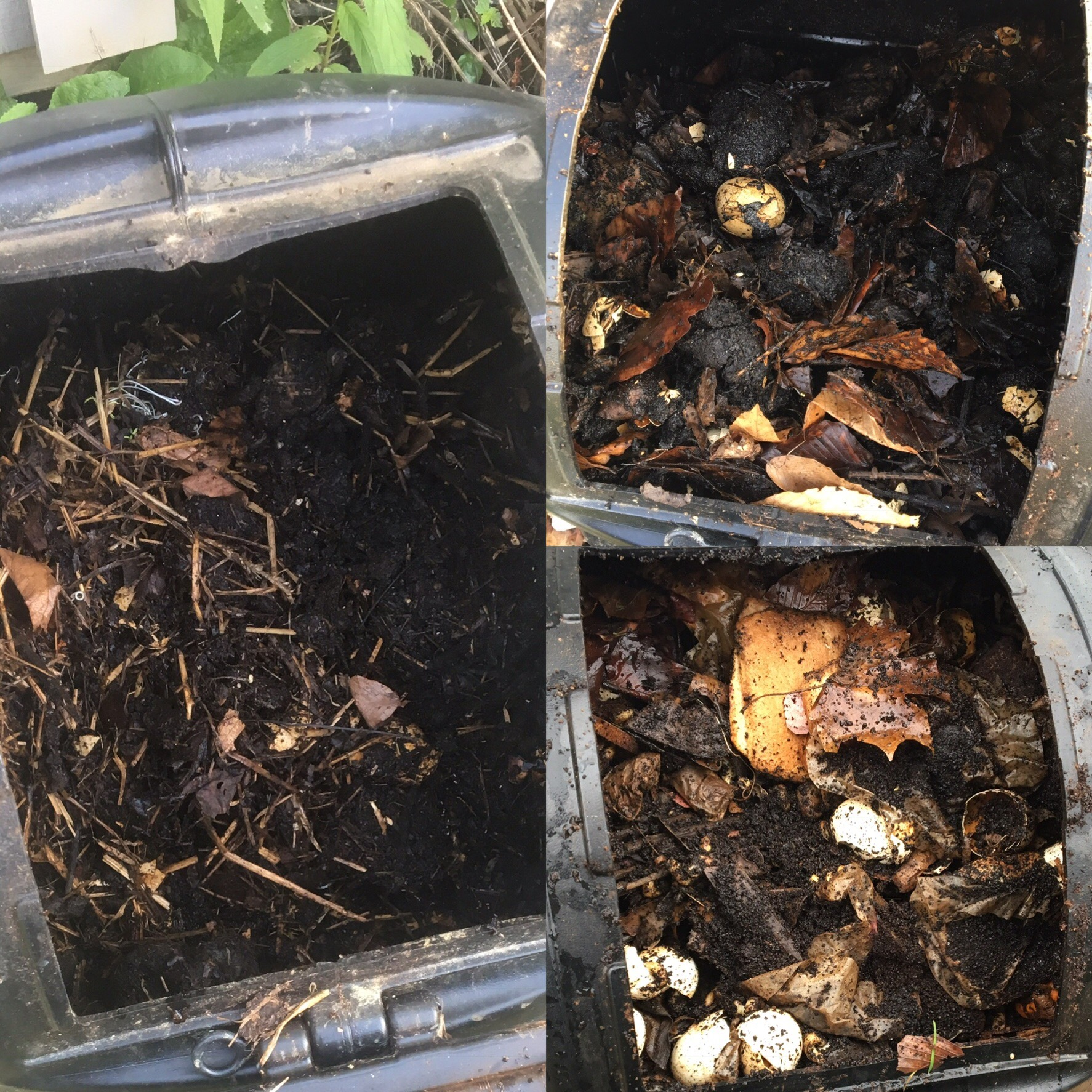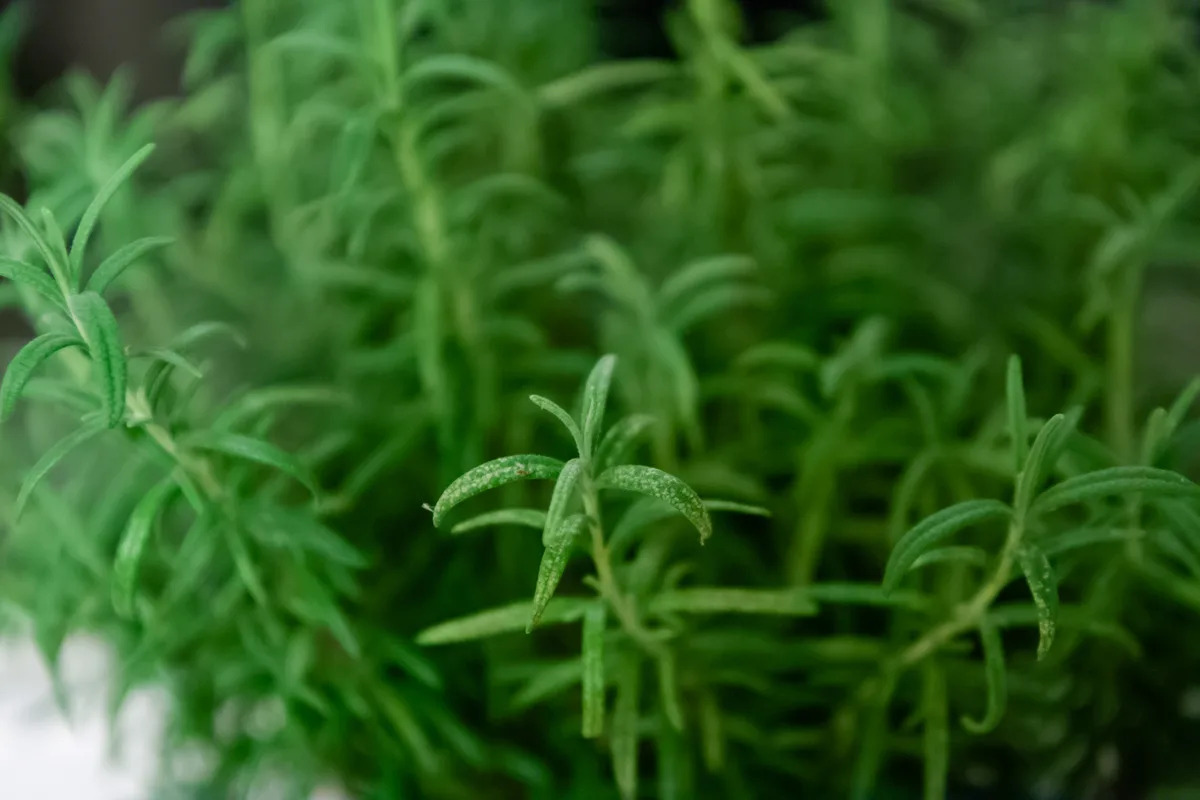Home>Gardening Tips and Tricks>Problem Solving>Why Is My Compost Not Breaking Down


Problem Solving
Why Is My Compost Not Breaking Down
Modified: January 22, 2024
Learn how to solve the problem of your compost not breaking down effectively. Discover expert tips and techniques for successful composting.
(Many of the links in this article redirect to a specific reviewed product. Your purchase of these products through affiliate links helps to generate commission for Chicagolandgardening.com, at no extra cost. Learn more)
Table of Contents
Introduction
Composting is a natural process that transforms organic waste into nutrient-rich soil amendment. It is an eco-friendly and sustainable way to manage and recycle kitchen scraps, yard waste, and other organic materials. However, if you’ve noticed that your compost is not breaking down as quickly or efficiently as it should, you may be wondering what could be the problem.
Compost breakdown is influenced by several factors, including the availability of oxygen, the carbon to nitrogen ratio, moisture content, presence of microorganisms, and temperature. Understanding these factors and their impact on the composting process can help you troubleshoot and create optimal conditions for quicker and more effective decomposition.
In this article, we will discuss the common reasons why your compost may not be breaking down and provide practical solutions to overcome these challenges. By addressing these issues, you can ensure that your composting efforts are successful, and you can enjoy nutrient-rich soil for your plants and garden.
Factors Affecting Compost Breakdown
Compost breakdown is a complex biological process that relies on a delicate balance of various factors. Understanding these factors is crucial for troubleshooting and improving the composting process. Let’s take a closer look at the main factors that can affect compost breakdown:
- Lack of oxygen: Oxygen is essential for the activity of aerobic microorganisms, which are responsible for breaking down organic matter. Insufficient airflow in the compost pile can lead to anaerobic conditions, slowing down the decomposition process. Turning the pile regularly or using a compost aerator can help improve oxygen levels.
- Incorrect carbon to nitrogen ratio: The carbon to nitrogen ratio (C:N ratio) is crucial for microbial activity. If the pile has too much carbon-based material (like dry leaves or straw) and too little nitrogen-based material (like food scraps or grass clippings), the decomposition process will be delayed. Strive for a balanced C:N ratio of around 30:1 to promote efficient breakdown.
- Insufficient moisture: Moisture is necessary to support the microbial activity responsible for decomposing organic matter. If the compost pile is too dry, the microbes will become inactive, resulting in a sluggish breakdown. On the other hand, if the pile is too wet, it may become waterlogged and anaerobic. Aim for a moisture level similar to that of a wrung-out sponge.
- Lack of microorganisms: Microorganisms, such as bacteria and fungi, are the workhorses of the composting process. If the pile lacks a diverse population of these microorganisms, decomposition will be slow. Introducing compost starter or adding finished compost as an inoculant can help kick-start the microbial activity in your pile.
- Inadequate temperature: Composting microorganisms thrive in the temperature range of 110°F to 160°F (43°C to 71°C). If the pile is too cold, decomposition will be sluggish. Conversely, if the pile becomes too hot, it may kill off beneficial microorganisms. Monitoring the temperature and adjusting the pile’s size and ingredients can help maintain an optimal temperature range.
By addressing and optimizing these factors, you can create favorable conditions for compost breakdown. In the next section, we will discuss some common composting mistakes to avoid for successful composting.
Lack of Oxygen
Oxygen is crucial for the composting process, particularly for the activity of aerobic microorganisms. These microorganisms require oxygen to break down organic matter effectively. When the compost pile lacks oxygen, it creates anaerobic conditions that can slow down or halt the decomposition process entirely.
There are a few common reasons why a compost pile may suffer from a lack of oxygen:
- Dense and compacted materials: If the compost pile is filled with densely packed materials, it can restrict airflow and create pockets of low or no oxygen. This can prevent the aerobic microorganisms from thriving and breaking down the organic matter. To rectify this, make sure to mix and fluff up the compost materials regularly to allow air to circulate.
- Too much moisture: Excessive moisture in the compost pile can lead to compaction, squeezing out the air pockets. When the pile is waterlogged, the oxygen supply diminishes, and anaerobic decomposition can occur. It’s important to maintain the right moisture balance in the compost pile, similar to that of a wrung-out sponge.
- Lack of turning: Turning the compost pile regularly helps to add oxygen and promote even decomposition. If the pile is not turned frequently enough, layers can become compacted, limiting oxygen availability. Aim to turn the pile at least once a week, or more often if possible, to ensure adequate oxygenation.
- Insufficient ventilation: Proper ventilation is essential for allowing air to flow through the compost pile. If the pile is contained in a closed or poorly ventilated compost bin, there may be limited airflow. Consider using compost bins with good ventilation or adding perforations to improve air circulation.
To address the lack of oxygen in your compost pile, it’s important to take action and implement changes. Regularly turning and mixing the pile can help introduce oxygen, break up compacted materials, and promote aerobic decomposition. Additionally, ensuring the right moisture level and providing proper ventilation will also contribute to maintaining adequate oxygen levels for efficient compost breakdown.
Incorrect Carbon to Nitrogen Ratio
The carbon to nitrogen ratio (C:N ratio) is a crucial factor in composting. It refers to the balance between carbon-rich materials (often referred to as “browns”) and nitrogen-rich materials (known as “greens”). A compost pile with an incorrect C:N ratio can result in slow decomposition and hinder the breakdown of organic matter.
A C:N ratio that is too high in carbon can delay composting. This typically occurs when there is an abundance of dry leaves, straw, or woody materials in the pile. These carbon-rich materials are slower to break down and require more nitrogen to facilitate decomposition. On the other hand, a C:N ratio that is too high in nitrogen can lead to a smelly, slimy pile and the loss of valuable nutrients.
To achieve the ideal C:N ratio of around 30:1, it’s important to balance the different materials in your compost pile:
- Carbon-rich materials: These materials provide structure and a source of energy for microbial activity. Examples include dry leaves, straw, sawdust, shredded cardboard, and wood chips.
- Nitrogen-rich materials: These materials are essential for the growth and reproduction of microorganisms. Examples include vegetable scraps, fruit peels, grass clippings, coffee grounds, and manure (in small amounts).
To maintain the correct C:N ratio, a general guideline is to have roughly three parts carbon-rich materials for every part nitrogen-rich materials. This ensures a healthy balance and facilitates the decomposition process. If your compost pile is carbon-heavy, consider adding more nitrogen-rich materials, and if it is nitrogen-heavy, add more carbon-rich materials.
In addition to balancing the materials, ensuring proper moisture levels and regular turning of the compost pile can also help optimize the decomposition process. This encourages the mixture of materials and allows for a more even distribution of carbon and nitrogen, aiding in achieving the desired C:N ratio.
By understanding and addressing the importance of the carbon to nitrogen ratio, you can create an environment that supports efficient compost breakdown and produces high-quality compost for your garden.
Insufficient Moisture
Moisture plays a vital role in the composting process. It creates the ideal environment for microorganisms to break down organic matter efficiently. If there is insufficient moisture in your compost pile, the decomposition process can slow down or even come to a halt.
Several factors can contribute to insufficient moisture in the compost pile:
- Dry compost materials: If your compost pile consists mainly of dry leaves, straw, or woody materials, it can lack the necessary moisture for microbial activity. These carbon-rich materials tend to absorb water and can leave the pile too dry. Balancing it with nitrogen-rich materials and adding water as needed can help maintain the ideal moisture level.
- Inadequate watering: While compost materials may contain some moisture naturally, additional watering is often required. It is important to monitor the moisture content regularly, especially in dry climates or during hot weather, and water accordingly. Aim for a moisture level similar to that of a wrung-out sponge – damp but not waterlogged.
- Limited rainfall: In regions with low rainfall or during dry seasons, it can be a challenge to keep the compost pile adequately moist. In these cases, consider covering the pile with a tarp or using a compost bin with a lid to help retain moisture.
- Overwatering: While insufficient moisture can hinder decomposition, overwatering can also be problematic. Excessive moisture can lead to a waterlogged pile, causing anaerobic conditions and a foul smell. It’s important to find the right balance and avoid saturating the pile with excessive water.
To ensure sufficient moisture in your compost pile, it’s important to regularly monitor and adjust the moisture levels. If the pile feels dry, gradually add water while mixing the materials to distribute the moisture evenly. If the pile is too wet, mix in dry carbon-rich materials to absorb excess moisture. Maintaining a consistent moisture level will provide the optimal environment for microorganisms to thrive and facilitate the breakdown of organic matter.
Remember that moisture requirements may vary depending on the composition of your compost materials and external factors, such as weather conditions. By addressing insufficient moisture, you can effectively support the decomposition process and produce high-quality compost for your gardening needs.
Lack of Microorganisms
Microorganisms, such as bacteria and fungi, are essential for the decomposition of organic matter in the compost pile. They break down complex organic compounds into simpler forms, resulting in nutrient-rich compost. However, if your compost pile lacks a diverse population of these microorganisms, the breakdown process can be slow or even non-existent.
There are several reasons why a compost pile may suffer from a lack of microorganisms:
- Unbalanced ingredients: A compost pile that consists primarily of one type of material, such as leaves or grass clippings, may not provide the necessary variety for the growth and reproduction of microorganisms. It’s important to create a diverse mix of carbon-rich and nitrogen-rich materials to encourage the development of a thriving microbial community.
- Extreme temperatures: High temperatures in a compost pile can kill off beneficial microorganisms, leading to a decline in their population. Similarly, extremely cold temperatures can slow down their activity. Maintaining an optimal temperature range between 110°F and 160°F (43°C to 71°C) allows microorganisms to thrive and facilitates the decomposition process.
- Use of chemicals: The use of chemical pesticides, herbicides, or synthetic fertilizers in the compost pile can be detrimental to microorganisms. These chemicals may kill off or inhibit the growth of beneficial bacteria and fungi. Opt for organic materials and avoid chemical inputs to support a healthy microbial community.
- Insufficient inoculation: If your compost pile is lacking in microorganisms, you can introduce them by adding compost starter or incorporating finished compost into the pile. This inoculation can help jumpstart the decomposition process by introducing a diverse population of microorganisms to break down the organic matter.
To address the lack of microorganisms in your compost pile, it’s important to create an environment that supports their growth and activity. This can be achieved by using a balanced mix of materials, maintaining optimal temperatures, avoiding chemical inputs, and incorporating beneficial microorganisms through compost starter or finished compost.
Remember that microorganisms thrive in an aerobic environment, so proper aeration and turning of the compost pile are crucial. By providing an ideal habitat for microorganisms, you can enhance the breakdown process and produce nutrient-rich compost for your garden.
Inadequate Temperature
Temperature plays a significant role in the composting process as it directly influences the activity and growth of microorganisms responsible for breaking down organic matter. Inadequate temperature in your compost pile can hinder the decomposition process and slow down the breakdown of materials.
Here are some factors that can contribute to inadequate temperature in your compost pile:
- Cold weather or climate: During cold weather or in regions with frigid climates, it can be challenging to maintain optimal temperatures for composting. The low temperatures can slow down microbial activity and impede decomposition. Insulating the pile or using a compost bin designed to retain heat can help elevate the temperature.
- Small compost pile: Small compost piles have less mass and may not generate enough heat for efficient decomposition. Smaller piles can lose heat more quickly, resulting in lower temperatures. Consider increasing the size of the pile or combining multiple smaller piles to improve heat retention.
- Improper carbon to nitrogen ratio: An unbalanced ratio of carbon-rich to nitrogen-rich materials can affect the temperature of the compost pile. If the carbon content is too high, it can slow down decomposition and lower the temperature. Strive for a balanced C:N ratio of around 30:1 to maintain optimal temperatures.
- Lack of aeration: Proper aeration and turning of the compost pile are essential for temperature management. Inadequate aeration can lead to a lack of oxygen, causing the pile to become anaerobic and cooler in temperature. Regularly turning the pile can promote air circulation and temperature regulation.
To ensure adequate temperature in your compost pile, it’s important to monitor and make necessary adjustments. Here are some solutions to address inadequate temperature:
- Insulate the pile: Adding insulating materials such as straw, hay, or dry leaves to the compost pile can help retain heat and elevate the temperature. These materials act as a barrier and provide insulation against cold weather.
- Increase pile size: Increasing the size of your compost pile can enhance heat retention. Consider combining multiple smaller piles or adding more materials to boost mass and improve the ability to generate heat.
- Adjust carbon to nitrogen ratio: Maintaining a balanced C:N ratio of around 30:1 can help optimize microbial activity and temperature in the compost pile. Adjust the mixture by adding carbon-rich or nitrogen-rich materials as needed.
- Turn the pile: Regularly turning the compost pile promotes aeration, allowing oxygen to reach the microorganisms and optimizing their activity. Turning the pile helps distribute heat evenly and avoids cold spots.
By addressing inadequate temperature in your compost pile, you can create the optimal conditions for microorganisms to thrive and promote efficient decomposition of organic matter.
Common Composting Mistakes to Avoid
Composting is a rewarding and environmentally-friendly practice, but it’s important to be aware of common mistakes that can hinder the composting process. By avoiding these pitfalls, you can ensure that your compost pile thrives and effectively breaks down organic matter. Here are some common composting mistakes to avoid:
- Adding non-compostable materials: It’s essential to only include organic materials that can decompose in your compost pile. Avoid adding items such as meat, dairy products, oily food waste, and diseased plant material, as they can attract pests or slow down the decomposition process.
- Ignoring the carbon to nitrogen ratio: Maintaining a balanced carbon to nitrogen ratio is crucial for optimal composting. Neglecting this ratio can result in a slow or inefficient breakdown of organic matter. Use a mix of carbon-rich materials (like dry leaves or straw) and nitrogen-rich materials (such as fruit peels or grass clippings) to achieve the right balance.
- Failure to turn the compost pile: Regularly turning the compost pile is vital for aeration and the proper distribution of heat and moisture. Neglecting to turn the pile can lead to compaction and the formation of anaerobic zones, inhibiting the activity of beneficial microorganisms.
- Improper moisture management: Moisture is essential for microbial activity and decomposition. Failing to maintain the right moisture level can result in a dry or waterlogged compost pile. Monitor the moisture regularly and adjust by adding water or dry materials to maintain a damp, but not soggy, consistency.
- Layering materials incorrectly: Layering materials in the compost pile incorrectly can lead to uneven decomposition and the formation of compacted layers. Aim to mix the materials thoroughly to ensure a diverse blend and to allow for even breakdown throughout the pile.
- Adding too much compostable material at once: Overloading the compost pile with too much material at once can overwhelm the beneficial microorganisms and hinder decomposition. Add materials gradually, allowing the pile to break down each addition before adding more.
- Using compost in the garden too soon: It’s important to allow compost to fully mature and undergo a curing process before using it in the garden. Using immature compost can potentially harm plants due to the release of phytotoxic substances or the depletion of soil nutrients.
- Not covering the compost pile: Leaving the compost pile uncovered exposes it to excess moisture, which can lead to waterlogging, or excessive drying. Use a cover or tarp to protect the pile from excessive rain or sun, while still allowing for proper airflow.
- Using chemicals or treated materials: Avoid adding chemical-based products or treated materials, such as wood treated with preservatives, to your compost pile. These substances can harm beneficial microorganisms and introduce harmful chemicals into your compost and garden.
- Not considering the location: Choosing the right location for your compost pile is crucial. Avoid placing it too close to structures or areas prone to water runoff. Additionally, consider the accessibility and convenience of the location for regular maintenance and turning of the pile.
By avoiding these common composting mistakes, you can ensure a healthy and productive composting process. Remember to follow best practices, maintain proper ratios, and provide the necessary conditions for organic matter to break down efficiently.
Conclusion
Composting is a valuable practice that allows us to recycle organic waste and transform it into nutrient-rich soil amendment. However, it’s important to understand the factors that can affect compost breakdown and troubleshoot any issues that may arise. Lack of oxygen, an incorrect carbon to nitrogen ratio, insufficient moisture, a lack of microorganisms, and inadequate temperature are common challenges that can hinder the composting process.
By addressing these factors and avoiding common composting mistakes, you can create an optimal environment for efficient compost breakdown. Ensure proper aeration by turning the compost pile regularly and fluffing up the materials. Maintain a balanced carbon to nitrogen ratio and adjust moisture levels to provide the ideal conditions for microbial activity. Introduce compost starter or finished compost to enhance the population of beneficial microorganisms. Monitor and manage temperature to promote optimal decomposition.
Avoiding mistakes such as adding non-compostable materials, neglecting to turn the pile, improper layering, or using chemicals in the compost pile is crucial for successful composting. Furthermore, allowing the compost to fully mature and using it in your garden at the right time ensures its effectiveness and prevents potential harm to plants.
Composting is a rewarding process that not only reduces waste but also contributes to sustainable gardening practices. By understanding the factors that affect compost breakdown, avoiding common mistakes, and implementing best practices, you can derive the maximum benefit from your compost pile. The result will be nutrient-rich compost that boosts soil health, improves plant growth, and supports a greener and more environmentally friendly approach to gardening and waste management.





